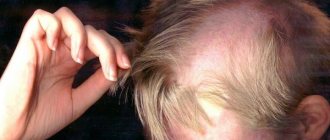Deviant behavior is any behavior that deviates from social norms. The key point is that norms are set in relation to a particular society. Therefore, behavior that is normal for some people is considered undesirable in another culture.
There is no generally accepted classification of types of deviant behavior. Below are several different classifications depending on the characteristics taken as a basis.
According to the goals pursued by the individual, deviant behavior occurs:
- selfish orientation - the desire to obtain selfish material gain through dishonest actions or offenses (theft, deception, fraud, speculation);
- aggressive orientation – crimes against the person (rape, murder, beatings, insults);
- socially passive orientation - avoidance of fulfilling social normative responsibilities, avoidance of an active lifestyle and solving necessary problems (absenteeism from work and school, various types of addiction, vagrancy, suicidal thoughts).
In terms of results, deviations from the norm are:
- positive – the individual’s actions are aimed at overcoming outdated standards and contribute to changes in the social system for the better;
- negative – human actions are aimed at destroying the social system, leading it to dysfunction and disorganization.
Some experts divide deviant behavior into the following types:
- antisocial (delinquent) – a person’s actions contradict legal, moral, ethical and cultural norms;
- asocial - an individual commits actions that do not correspond to the social and legal norms of the society in which he lives, as well as customs and traditions;
- self-destructive - such behavior threatens the development and integrity of the personality itself.
Deviant behavior in childhood and adolescence may include a combination of several types or manifest itself in only one. Such changes can appear very early due to congenital causes, arise as a result of physical injuries that affect brain activity and neurological condition, or be formed during the process of upbringing or under the influence of unfavorable social and psychotraumatic factors.
The assessment of one's actions in children and adolescents can also be different. Some feel guilty, which causes their self-esteem to drop and neuroses to appear. Others consider their behavior normal and justify it, even if society considers it deviations from the norm.
Deviant behavior of children
Problems in upbringing, disobedience and aggressive aspects of behavior force parents to think about the mental state of the child at an early age.
The causes of deviant behavior in children are quite diverse:
- Biological – include intrauterine lesions (toxic effects, asphyxia, etc.), hereditary diseases that provoke delays in physical and mental development, and damage to the nervous system. This also includes somatic and mental disorders received by the child in the first years of life (traumatic brain injuries, frequent stress, etc.).
- Social – reflect different levels of ill-being of the surrounding people. This includes alcoholism of relatives (for example, a young family lives in the same apartment with a drinking grandfather), excessive conflict, and domestic violence. All this provokes the child to adjust his behavior in accordance with antisocial norms. An incomplete family can also influence deviant behavior, since the child has a deficit of role and behavioral reactions that should be borrowed from the corresponding family member.
- Pedagogical - this includes the abuse of prohibitions, lack of explanations for punishments, which in turn causes a protest reaction on the part of the child. Also, deviant behavior develops as a result of a standardized approach to treating children in preschool and school institutions, where individual characteristics are not taken into account.
- Psychological – features of upbringing in the family that adversely affected the emotional-volitional sphere of the child, for example, upbringing according to the “family idol” type, hyper- or hypoprotection, domestic violence, parental alcoholism. Psychological reasons also include a violation of attachment to adults.
If there are medical indications, then therapy should be carried out as early as possible. In the case of social and pedagogical reasons, it makes sense to think about changing the strategy of adult behavior.
In the same way, psychological reasons require immediate correction. If deviant behavior is ignored in childhood, then it is consolidated and becomes more stable, flowing into adolescence.
How deviant behavior manifests itself
Schoolboy
- fights too often;
- hooligans;
- cruel to peers or animals;
- spoils other people's things;
- sets something on fire;
- steals;
- often lies;
- skips school, violates school rules;
- leaves home, wanders;
- behaves defiantly, deliberately provokes other people into conflicts.
Deviation can be of two types. The first includes such violations that imply criminal liability, in other words, criminal. In this article we will not dwell in detail on this particular form; the subject of the article will be manifestations related to the second type - violations as a result of distortion of social attitudes that do not imply criminal liability, as well as deviations due to learning difficulties and an unfavorable family environment. Most often, the prerequisites for the appearance of such deviations are formed in childhood and become fixed in adolescence.
Deviant behavior of adolescents
Deviant behavior in adolescence is more dangerous than in childhood. Firstly, because a teenager can commit more destructive actions. Secondly, because correcting such phenomena requires active action and a long time.
The causes of deviant behavior in adolescents can begin in early childhood, or may develop later under the influence of a peer group or due to a change in environment, maladjustment (for example, due to the breakdown of a family, the loss of a loved one, etc.).
The most common forms of deviant behavior among adolescents:
- destructive-aggressive - it is characterized by radical and even rebellious actions of the individual in order to establish new orders in the environment where he is located, this can be a family or boarding school, orphanage, as well as changing the activities of a social group or his place in it (class in school, a group at a club or in a sports section, a gangster group on the street, etc.).
- destructive-compensatory - a milder form of deviant behavior in which a teenager tries to take a desired place in society or achieve certain changes in his social status. In contrast to the destructive-aggressive form of behavior, in this case a person most often gives in to his principles and beliefs, falling under the influence of a certain social group. This may be submission to the rules of informal groups in exchange for their friendship, protection, recognition or material support. For example, a teenager who has not previously tried cigarettes or alcohol or has not used obscene language begins to use them. Joins in bullying someone outside the group or takes a passive position, not trying to protect the victim from attacks from peers.
- compensatory-illusory - aimed at relieving psychological discomfort and dissatisfaction with the current state of affairs with the help of psychoactive substances. There is no opposition to society; the teenager chooses to isolate himself from it or artificially change the existing perception.
Correcting the latter form of deviance usually causes the greatest difficulties, since in addition to psychological characteristics, it is also necessary to solve the problem of addiction.
Reasons for deviant behavior
A deviation can be formed as a result of initially given organic reasons or as a result of violations in the process of development and education. Initially predetermined causes include genetic developmental defects, birth injuries, disturbances in the formation and development of various systems and functions of the body (intellectual development, features of mental operations, etc.). These reasons create conditions for the occurrence of disorders (for example, in hyperactive children, mentally retarded, autistic). But, more often than not, they only determine the risk group for the development of social deviant behavior in children and adolescents. A student may not have any problems with discipline, but at the same time have such developmental disorders. Moreover, under subjectively difficult stressful conditions, such a schoolchild or teenager may begin to behave in a way that falls under the definition of a deviant child. Risk conditions can be associated with various areas of life.
In the family it is:
- antisocial character of the family as a whole or of its individual members: marginal lifestyle of parents, alcoholism, drug addiction, etc.;
- single-parent family or severe disruption of the relationship between parents;
- violations in the style of family upbringing (such as hyper or hypoprotection, family idol, etc.);
- physical or psychological violence in the family (both in relation to children and in relation to other family members, which children witness).
At school it is:
- priority in ensuring the personal authority of the teacher at any cost (including through humiliation and insults of the child);
- the complexity of tasks exceeds the student’s real capabilities (interest in learning and knowledge is lost, the teenager is looking for other ways to assert himself and compensate for his own failure);
- it is difficult for a student to find his place in a team, or the team chooses him as a means of solving their own socio-psychological difficulties, and this can be expressed in boycotts, ridicule, and bullying.
If any of the listed reasons are present, then the process of forming and consolidating the psychology of deviant behavior looks like this: 1. The student does not know how to behave in new, unusual conditions. The methods known to him do not help, and he has not yet learned new ones or does not know how to behave differently. 2. The student tries to build relationships with others, but his attempts are not successful. As a result, he becomes exhausted, becomes convinced of his failure and is not confident in his abilities. At the same time, his anger towards what is happening appears and grows, and this already pushes the little personality to violate the rules accepted in society. 3. The situation becomes psychologically unbearable for an immature person, and she does not know how to resolve it in an acceptable way. 4. Further deviation from the norm can be formed in one of two ways. Or the student commits unacceptable actions and at the same time understands the incorrectness of his reaction. In this case, he experiences a feeling of guilt, his self-esteem becomes low and the teenager finds himself in a situation of increasing psychological stress. As a result, various psychological disorders (neuroses, psychoses) may arise that require qualified help. Or the teenager commits negative actions and at the same time justifies them. He does not have an internal conflict in connection with the way he behaves; he acts with the aim of obtaining benefits or increasing self-esteem, position among peers, and self-affirmation.
Prevention of deviant behavior
Preventive measures should be aimed at identifying children at risk, eliminating factors contributing to the development of deviations, as well as providing timely assistance.
In order to stabilize the emotional and behavioral spheres in children and adolescents, it is necessary:
- To develop an interest in the world around us and people, a desire to study and understand the patterns of people’s reactions and the functioning of society. This needs to be done not only in educational institutions, but above all in the family.
- Introduce the child to the appropriate rules of behavior in various life situations. For kids, it is possible to consolidate the necessary skills in a playful way; for teenagers, training classes are suitable.
- Develop adequate self-perception and self-esteem, which subsequently makes it possible to navigate in any situation and choose appropriate behavior from those strategies that were successfully learned earlier.
- Develop communication skills in various forms for any situation, as well as with different categories of people. The more practice a person receives, the higher the likelihood of subconsciously using the correct strategy in a real situation.
- Parents should pay attention to intrafamily interaction and the psycho-emotional atmosphere in the family. Develop mutual understanding and parenting competence.
For categories of children and adolescents who have undergone correctional programs, it is necessary to prevent a return to previous forms of interaction. The key points here will be practicing the acquired skills and appropriate moral and psychological support.
Psychological prevention of deviant behavior in children and adolescents
Seal
The changes taking place in our society today have highlighted with particular urgency the problem of helping children and adolescents with deviant behavior and the development of an effective system of prevention and rehabilitation measures for this group of youth.
The search for the effectiveness of social prevention measures involves determining the essence of the concept of “deviant behavior”, its types, factors influencing the accumulation of deviant potential of students, the causes of deviant behavior in children and adolescents, as well as the role of educational institutions in solving problems of preventing deviations in behavior.
Deviant behavior is usually called social behavior that does not correspond to the established norms in a given society.
I.S. Kon clarifies the definition of deviant behavior, considering it as a system of actions that deviate from the generally accepted or implied norm, be it the norms of mental health, law, culture and morality.
The current system of measures to prevent deviant behavior is ineffective. Causes:
- the priority of educational tasks over educational tasks in working with children and adolescents in an educational institution;
- low availability of specific preventive technologies for educational practitioners;
- providing assistance to “difficult children” mainly by enthusiastic teachers;
- unsystematic and inconsistent implementation of prevention and rehabilitation measures.
In order for preventive measures to be more effective, the following conditions must be created:
- identifying the adequacy of the applied preventive measures based on socio-pedagogical monitoring data;
- scientific and methodological equipment for the process of interaction between school, family and other social institutions in organizing work with children with deviant behavior (organization of interdepartmental interaction);
- training to improve the level of competence of specialists.
Deviant behavior is divided into two categories:
- Behavior that deviates from the norms of psychological health, implying the presence of overt or hidden psychopathology.
- Antisocial behavior that violates some social, cultural and especially legal norms.
Deviations in the behavior of children and adolescents may be due to the following reasons:
- socio-pedagogical neglect
, when children or adolescents behave incorrectly due to their bad manners, existing negative stereotypes of behavior, and their lack of the necessary positive knowledge, skills and abilities; - deep psychological discomfort
caused by dysfunctional family relationships, a negative psychological microclimate in the family, systematic academic failures, poor relationships with peers in the class, incorrect (unfair, rude) attitude towards him from parents, teachers, classmates; - deviations in the state of psychological, physical health and development
caused by age-related crises, character accentuations and other reasons of a physiological and psychoneurological nature; - lack of conditions for self-expression
, lack of employment in useful activities, lack of positive and meaningful social and personal life goals and plans, as well as lack of constructive leisure; - neglect
, negative environmental influences and socio-psychological disadaptation developing on this basis, mixing social and personal values from positive to negative.
Ways to prevent deviant behavior in adolescents:
The system for preventing deviant behavior of minors in modern conditions must take into account existing positive experience and, at the same time, new requirements of society.
It should be characterized by:
a) a combination of state and social principles, forces and resources in this activity;
b) a combination of four tasks: impact on the individual, the environment, the activities of subjects of education and prevention, public opinion;
c) specialization of the information fund, methodology, organizational forms and management, personnel and resources;
d) distribution of functions between individual participants in preventive activities;
e) determining the scope of application of educational measures, ensuring normal living conditions, social assistance and prevention itself, including its legal forms;
f) transition, if necessary, from predominantly general educational to legal measures of influence, ensuring the sufficiency and timeliness of this influence.
The prevention system should be based on legality, justice, democracy, interaction at the level of the country, federal subject, local government and between these levels, and a specialized legislative framework.
Education and prevention are interacting, but not identical spheres; therefore, in particular, educational institutions cannot be expected to solve problems that require specialized means using general educational means.
Prevention of deviant behavior of minors, as a continuously operating system, has the following main stages:
a) improve the environment and provide assistance to minors who find themselves in unfavorable living and educational conditions, even before the negative effects of these conditions significantly affect the behavior of such persons (early prevention stage);
b) prevent the transition to a criminal path and ensure the correction of persons with a significant degree of maladjustment who commit offenses of a non-criminal nature (direct prevention stage);
c) prevent transition to a criminal path and create conditions for the correction of persons who systematically commit offenses, the nature and intensity of which indicate the likelihood of committing a crime in the near future (stage of prevention of pre-criminal behavior).
Prevention methods are:
1. Ensure effective family participation. This is due to the development of assistance to families raising teenagers in conditions below the subsistence level, in the absence of one of the parents, illness or prolonged absence of parents due to the nature of work; protecting families with teenagers from the material and moral consequences of parental unemployment or forced job changes; formation in conditions when many families are confused, have lost clear ideas about the place and tasks of the family in raising adolescents, knowledge of rights and responsibilities in this area, ways to implement them, opportunities to receive help from government bodies, local governments and the public in cases when necessary protect the rights of teenagers or stop negative influences on them.
2. Effective assistance in creating life prospects for adolescents with physical and mental abnormalities is essential. Since their likelihood of deviant behavior is 4-5 times higher than the average for minors, due to lack of adaptation in a normal environment, the expansion of the network of institutions, their social, medical and psychological adaptation, as well as counseling assistance to families with such teenagers, includes among the priority tasks.
3. Improving the activities of educational institutions. This is due to proposals to restore the role of the school in the lives of adolescents on the basis of pedagogy, dialogue and cooperation, joint activities with the family, quality improvement of qualifications, cultural and moral level of teachers and the creation for them of material conditions and a psychological atmosphere that would encourage their retention in school and implementation of the educational potential of the educational institution.
4. The activities of bodies promoting the employment of teenagers who do not continue their studies and their labor adaptation. In modern conditions, it is especially important to ensure the preservation of advantages in hiring teenagers, a special procedure for their dismissal (exclusion from educational institutions); maintaining special officials for working with teenagers at the enterprise, as well as material and moral incentives.
5. Activities of institutions organizing leisure time for minors, highlighting special tasks in relation to adolescents from disadvantaged families and other risk groups. Currently, the most relevant measures are those that should resume the activities of the network of club (cultural, educational, sports) institutions for minors. At the same time through charity, voluntary foundations, public organizations. Taking into account the fact that the places where groups of minors are formed at their place of residence are areas with a particularly low level of culture and leisure opportunities for young people, the activities listed above are even more relevant as a social basis for prevention.
6. Development of social protection and assistance services for families and minors. The Law “On the Fundamentals of Social Services for the Population in the Russian Federation” identifies as one of the priority areas of activity of the social service the assistance, support, protection of minors in difficult life situations associated with orphanhood, neglect, poverty, conflicts and abuse in the family, lack of a permanent place residence. In this regard, the list of social service institutions includes territorial centers for social assistance to families and children, social rehabilitation centers for minors, centers for assistance to children without parental care, social shelters, orphanages for children with physical disabilities.
7. Participation of voluntary foundations, public organizations, public associations and movements. Foreign experience shows that social protection of families and minors, support and assistance to children at risk can be largely carried out (including training and payment of social workers) on the basis of these organizations and associations. Early prevention measures include: parent education; placing children in an after-school group; financial assistance from social services; conversation about the rights and responsibilities of parents; consideration by competent authorities of materials on improper performance of parental responsibilities; referral for treatment, etc. Identification of families in need of help and families in respect of whom it is necessary to take measures in order to ensure a normal situation is carried out by the authorities of social protection and assistance to families and minors in cooperation with educational institutions and public associations.
Thus, early prevention is carried out with the help of some prohibitive and restrictive measures (for example, labeling on media publications, banning the sale of alcoholic beverages to children and adolescents), as well as with the help of legal and pedagogical propaganda.
A negative trend in the life of society is the crisis of the family institution, the leveling of the concept of moral values and moral norms, which results in a steady increase in the number of social orphans, an increase in child neglect, and crime. The concept of deviant behavior has become widely used in pedagogy.
Deviant behavior in pedagogical practice is usually correlated with the concept of a difficult teenager.
Currently, difficult teenagers or teenagers with deviant behavior receive quite a lot of attention from specialists. The psychological portrait of a difficult teenager, presented in modern literature, looks something like this: “A teenager with deviant behavior is aggressive, vain, stubborn, emotionally unbalanced, apathetic, and does not accept social norms. Behavior is impulsive, the value system is replaced by group norms, and is focused on leisure.”
I would like to include different categories of teenagers. These include pedagogically neglected children and socially maladapted and difficult-to-educate children, who often include accentuated teenagers, conflict-prone teenagers, teenagers with a high level of negativism, demonstrating non-conformist tendencies in behavior. Also, teenagers with an antisocial orientation are also classified as deviants. All these categories of adolescents are usually combined into one group - adolescents with “deviant behavior.” The various components of the characteristics we have given are, to one degree or another, actually characteristic of different categories of difficult adolescents. At the same time, combining them into one group predetermines the expectation of deviant behavior and the manifestation of characteristics that correspond to negative expectations. This scheme is correlated with the theory of stigmatization, which explains the emergence and consolidation of deviant behavior as a consequence of the fact that a social group sticks appropriate labels on an individual by correlating the actions of a particular person with certain expectations (primary deviance), a reputation is created that forces the individual to adhere to a deviant role (secondary deviance) .
Thus, by classifying a teenager as a group of “difficult children,” we give him the opportunity to worsen his deviance.
Executor:
Sharypova O.A. teacher-psychologist at the medical office. prevention
List of used literature:
1. Volkov P.B. The role of the boarding school educational system in the development of the ability to regulate affects in adolescent orphans with addictive behavior // Psychological support of the educational process: state, problems, prospects. Materials of the V Psychological Readings of the All-Russian Scientific. –pract. conference: Ufa: BSPU, 2008 – 130 s
2. Kleiberg Yu.A. Deviantology. Reader. St. Petersburg: Peter, , 2010
3. Leontyev A.N. Activity. Consciousness. Personality. M.: Meaning; Ed. , 2004
4. Moskalenko V.D., Shibakova T.L. Addictive behavior in families of patients with alcoholism // Narcology. 2003. No. 9. pp. 14-17.
Return to list
Examples of deviant behavior and the correct reaction of parents
One of the common examples with which parents turn to a psychologist is when a child behaves aggressively for no apparent reason or makes scandals.
The most effective response on the part of adults, preventing the recurrence of such manifestations, will be its complete absence. Those. even if a child falls to the floor, chokes in hysterics and screams all over the street, the parent should start talking to him only after he has completely calmed down. Thus, self-control is trained and behavior is reinforced, in which the baby understands that he will be listened to only if he behaves normally.
Absenteeism from school and systematic failure to complete assignments should not cause an excessive reaction on the part of parents, but they also cannot be ignored. This form may be a way to attract attention from the family, or it may arise as a result of psychological difficulties that have arisen in the school community. Here it is important to calmly discuss with the child the reasons for this behavior, without interrogating or hinting at punishment. The main thing is to let the child understand that you are at the same time, that is, you are even ready to write a note to the class teacher if a banal rest will correct the situation.
In case of offenses and/or evidence of drug use, drastic measures are necessary to suppress this type of behavior, including changing the place of residence, if there are no other opportunities to change the child’s social circle. It is also necessary to carefully study the reasons for this behavior and eliminate them, since without removing the “root” of the problem, its recurrence is very likely.
Correction of deviant behavior
Due to the fact that the causes of behavior disorders in children and adolescents lie in different areas of their lives, both family and social development of the child, an integrated approach is required to correct them. It is important to evaluate the boy or girl for biological reasons for deviant behavior and, if present, provide adequate treatment. It is also necessary to review the methods of upbringing in the family, established models of interaction between adults and younger family members. Here, consultations with a family and child psychologist will provide invaluable assistance, since it is within his competence to see and help correct those aspects that, due to their familiarity and routine, may be invisible to parents. Children and teenagers often find themselves in difficult situations simply because they lack social skills and abilities. They do not know how to respond to provocation, how to communicate their dissatisfaction and disagreement in an acceptable way, and become upset and angry when other people's reactions go against their expectations. To develop such skills, on the advice of a psychologist, role-playing games are used, creating difficult social situations and allowing a young person or deviant teenager to find new ways of interaction in the “laboratory conditions” of the game, in a supportive atmosphere. The student receives feedback on his ways of interacting with adults and peers and learns to understand how his actions and actions can be reflected in the reactions and behavior of other people. In group or individual sessions with a psychologist, children learn how they can satisfy their needs for self-expression without causing harm to other people and themselves, and also gain skills in socially acceptable behavior. With the help and support of a specialist, the “difficult teenager” consolidates new abilities and finds the strength and opportunity to transfer the acquired skills from a learning and gaming situation to a real life environment. Deviant behavior of children and adolescents causes a lot of strong feelings among parents and teachers, a lot of anger, fear, and indignation. However, a person with disrupted behavior often suffers from the inability to solve difficult life situations for him in a socially positive way. Often deviant behavior is a cry for help, a signal that the student is experiencing serious trouble and needs support. Try to hear this call and seek help in a timely manner for your children and yourself!
If you or your children need psychological help, call tel. and make an appointment with a psychologist in St. Petersburg!







